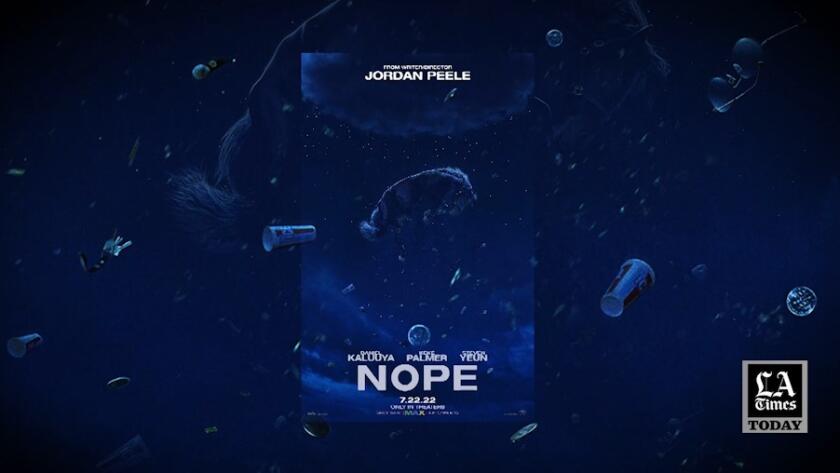Review: Say yup to Jordan Peele’s ‘Nope,’ the rare thriller Hollywood can look up to
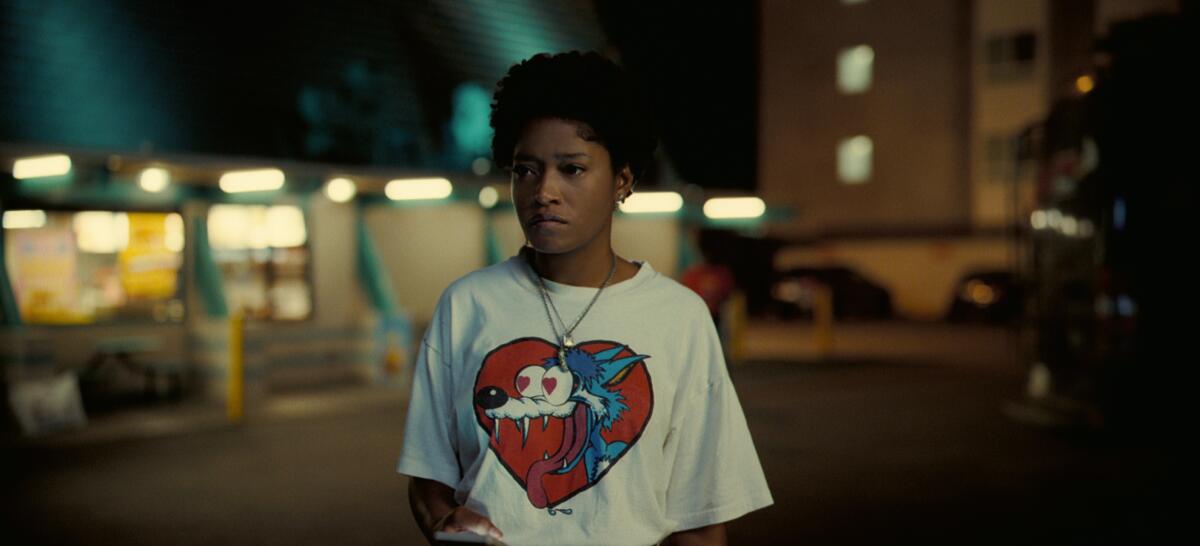
Given all the surreally unnerving sights there are to see in Jordan Peele’s “Nope” — a debris-choked windstorm, a weirdly undulating tunnel, a circular is-that-what-I-think-it-is gliding in and out of the clouds — it seems fitting that one of the movie’s most arresting images should be of a pair of eyes. Those eyes, wide and terrified, belong to a Southern California horse rancher named O.J. Haywood (Daniel Kaluuya), who peers up from the darkness of a stalled truck as something very big and very bad looms overhead. Until now, during much of the story’s slow, suggestive buildup, O.J.’s gaze has been downcast and hard to read, reflecting an indifference that verges on exhaustion. It takes a lot to shock those eyes wide open, but what he sees now gets his attention, to say nothing of ours.
You probably remember Kaluuya’s eyes staring into the sunken-place void of 2017’s “Get Out,” a triumph of socially conscious horror that proved his and Peele’s breakthrough. Their latest collaboration, though also solicitous of your shivers, has something rather different in mind. The labyrinthine fun houses and shadowy, subterranean depths of “Get Out” — and also of Peele’s messier, more ambitiously scaled 2019 freakout, “Us” — have given way to a vast kill zone of wide open spaces and bright desert sunshine, shot in magnificently dusty vistas by Hoyte Van Hoytema (known for his frame-filling Imax work on Christopher Nolan’s “Interstellar” and “Dunkirk”).
For your safety
The Times is committed to reviewing theatrical film releases during the COVID-19 pandemic. Because moviegoing carries risks during this time, we remind readers to follow health and safety guidelines as outlined by the CDC and local health officials.
And so while evil still lurks within, as it often does in Peele’s movies, here it also swoops and soars overhead in a cheekily outlandish story that the writer-director seems to have cooked up during an epic binge of “War of the Worlds” (both versions), “The Day the Earth Stood Still,” “The Thing From Another World” (and its better-known remake, “The Thing”), “Signs,” “Arrival” and especially “Close Encounters of the Third Kind.” Peele is nothing if not a pop-culture savant, and here he drops any number of classic Hollywood allusions — the spinning cyclone from “The Wizard of Oz,” the cropduster sequence from “North by Northwest” — as easily as he tosses out a reference to “Saturday Night Live” and, by extension, the larger sketch-comedy world where he began his career.
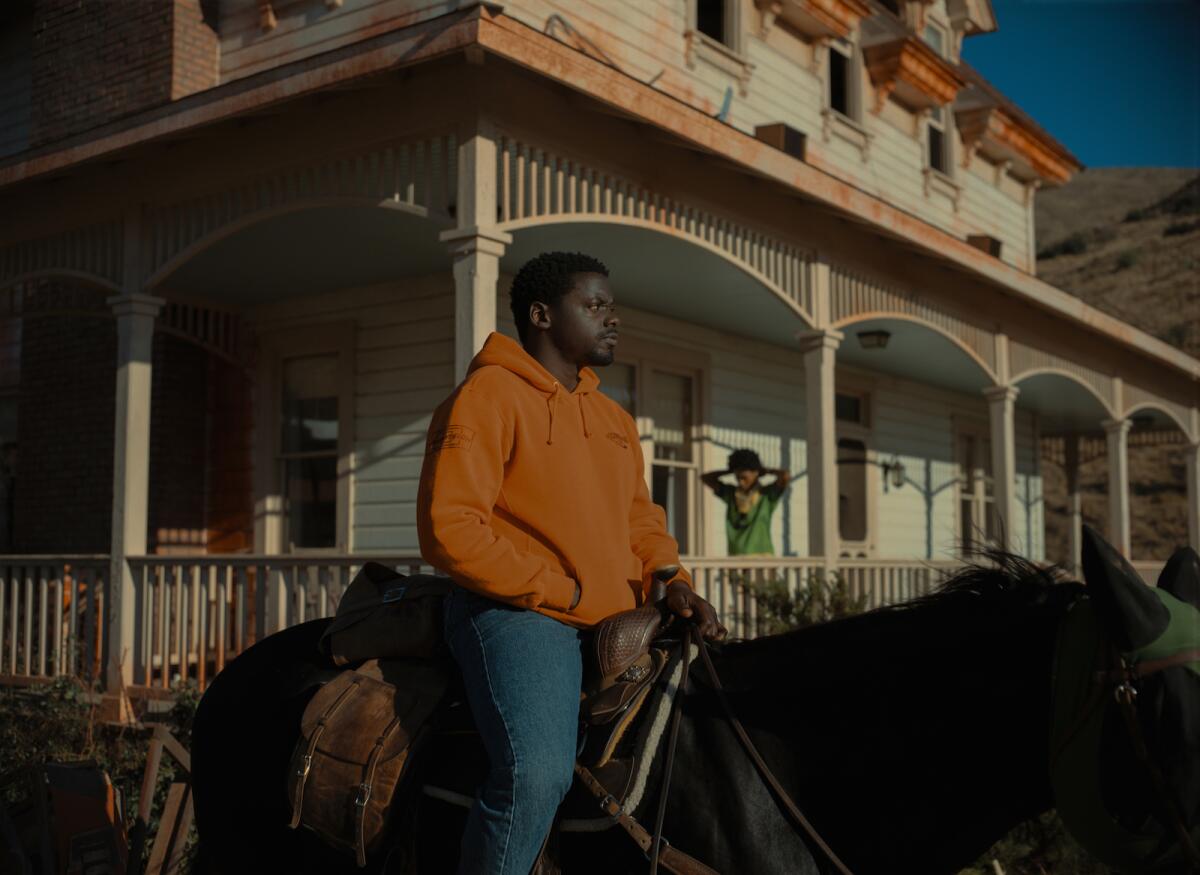
But Peele’s movie love, sincere and sometimes goofy as it is (watch for multiple nods to the Dwayne Johnson action vehicle “The Scorpion King”), also comes with a serrated edge. Perhaps his most pointed citation here is to “The Horse in Motion” (1878), Eadweard Muybridge’s two-second black-and-white clip of a man riding a horse. In “Nope,” that jockey — a rare Black man in a white-dominated profession — is conceived as a distant relation of O.J. and his upbeat younger sister, Em (a terrific Keke Palmer), who run a Hollywood horse-wrangling business that’s been in their family for generations. (“Since the moment pictures could move, we had skin in the game,” Em beams before a visibly bored camera crew.) Even as it plays fast and loose with the facts, then, “Nope” establishes itself as something of an ethically minded Hollywood history lesson, with a particular focus on the industry’s long, brutal record of animal accidents and abuses on set.
This connection is driven home by a few horrifying if discreetly framed flashbacks to an old ’90s family sitcom whose chimpanzee star, Gordy, would appear to have been at least partially inspired by a real-life simian celebrity named Travis. If that doesn’t ring a bell, resist the urge to Google; you’re better off hearing Gordy’s story in the words of a former co-star, Ricky “Jupe” Park (Steven Yeun). Decades later, wearing a cowboy hat and a chillingly blank half-smile, Jupe now runs Jupiter’s Claim, a small Old West theme park in Agua Dulce. Not far away is the Haywoods’ lonely ranch, which has fallen on tough times since the mysterious death of O.J. and Em’s father (Keith David), and which Jupe wants to absorb into his cowboy-kitsch empire. All this is taking place barely 50 miles north of Los Angeles, in a stretch of desert that — with its bright-colored inflatable skydancers and pennant streamers — sometimes suggests a used-car lot and sometimes feels like a Hollywood dumping ground.
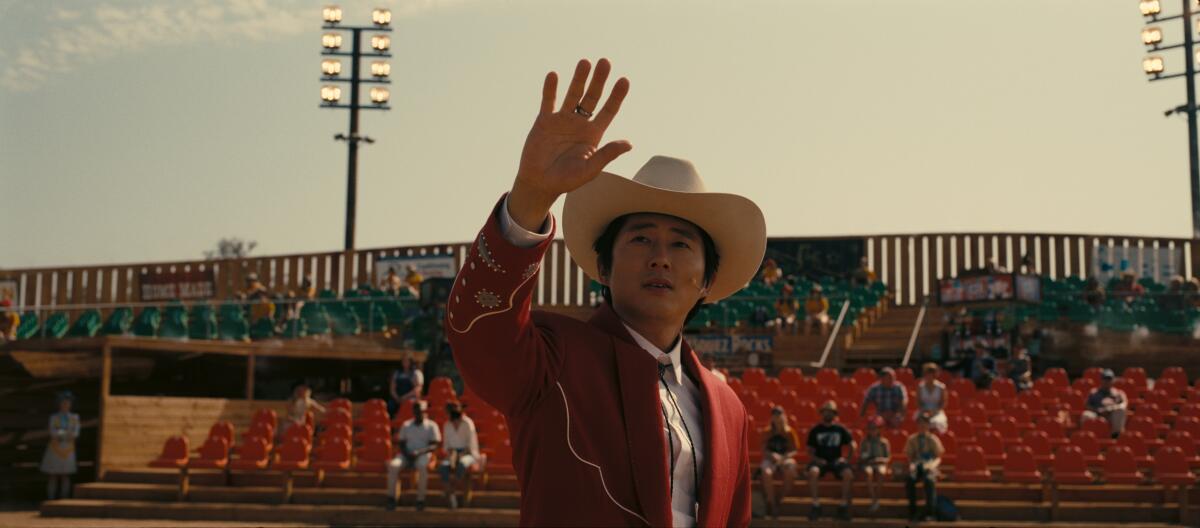
There’s a lot going on here, in other words, even before “Nope” turns our attention toward that giant disc flying ominously overhead, unleashes a hellish rain over the Haywoods’ ranch and cranks up the volume on its shrieking, juddering soundtrack. (There are moments when Michael Abels’ nerve-shredding score plays like a veritable symphony of human screams.) But if the story is a welter of subplots, tangents and ideas — to the point of being overly taken at times with its own conceptual daring — Peele’s visual craft shows an admirable finesse and discretion. He long ago absorbed the key lesson of “Jaws,” namely that what we don’t see is almost always scarier than what we do see, and that delayed gratification can amplify the power of suggestion. And so for a lengthy stretch he keeps his secret weapon a legitimate secret, with the unspoken assurance that everything (or at least a lot) will be revealed in due course.
In the meantime, you can savor the prickles of comic tension between O.J. and Em, and appreciate how Kaluuya’s and Palmer’s initially clashing rhythms — his slow and dour, hers fast and excitable — gradually come to complement each other as their characters join forces. You might also reflect on all the western iconography in Ruth De Jong’s meticulous production design, from the Haywoods’ dwindling stable of horses and the phony saloon exteriors of Jupiter’s Claim to the way that saucer in the sky, from certain angles, resembles the underside of a giant cowboy hat. “Nope” is a western in more than one sense, an idea borne out by Kaluuya’s taciturn heroism and the ragtag crew — including a friendly electronics-store employee, Angel (the likable Brandon Perea) — that soon comes together, mounting a brave stand against a nameless hunter that soon becomes the hunted.
As in “Us,” Peele shows a fondness for Old Testament scripture, opening here with a grim quote from the prophet Nahum: “I will cast abominable filth at you, make you vile, make you a spectacle.” That last word, “spectacle,” is crucial; it sets the stage for Peele’s inquiry into the business of exploiting Mother Nature’s creations — be they chimp or horse — for the purposes of mass entertainment. But it also suggests another kind of spectacle, the kind that transforms casual observers into camera-wielding obsessives, driving them to risk their lives and minds to prove that otherworldly phenomena exist. What binds this movie so closely to “Close Encounters of the Third Kind” has less to do with alien visitors, in the end, than with the fervent curiosity that they can inspire. Some version of that obsession grabs hold of O.J., Em, Jupe and Angel; it also consumes a local cinematographer, Antlers (Michael Wincott, channeling Robert Shaw), who fuels their determination to capture incontrovertible evidence of what they’re seeing.
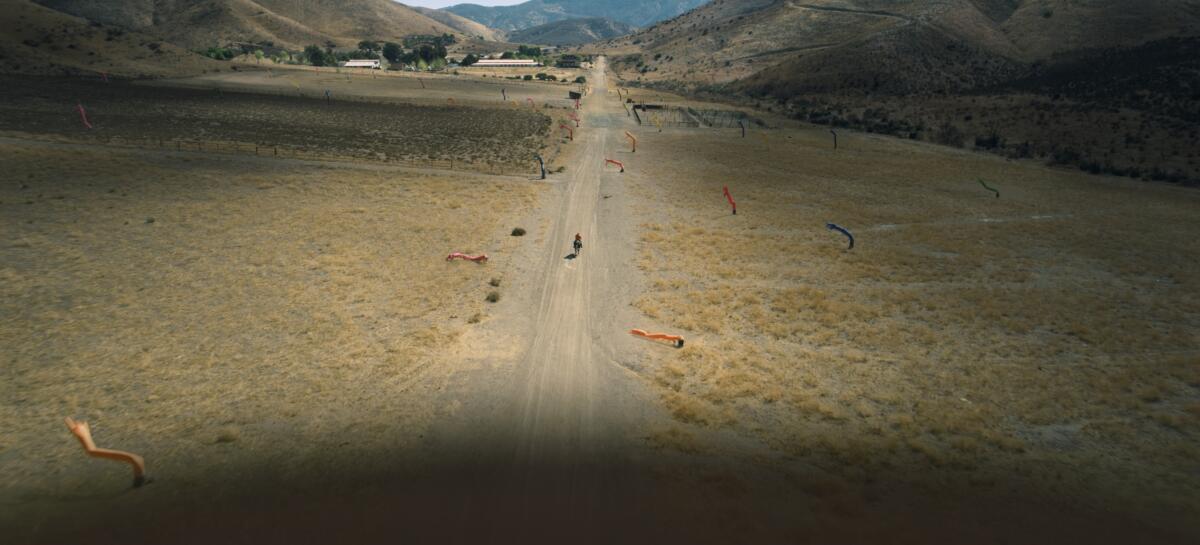
In some ways, then, “Nope” is a movie about the challenge of getting the perfect shot, an aim that Peele shares on a practical and artistic level — there’s no shortage of well-framed, jaw-dropping images — even as he cautions against it in the abstract. The four-letter title, which the characters mutter under their breath at moments of heightened anxiety, also functions as a kind of warning. In a sense, Peele wants to use a Hollywood genre template to mount a critique of Hollywood barbarism, to lay bare the callousness of an industry that grinds dreams into dust and exacts a lot of unseen collateral damage. And because the audience plays its part in this vicious cycle, Peele means to complicate the very act of watching, to suggest that it can have its moral costs as well as its undeniable pleasures. That’s one reason he implies rather than embraces the violence of his story’s darkest moments, turning the unspeakable into the unshowable.
All of which may leave “Nope” feeling like something of a B-movie ouroboros, an unusually well-made and imaginative thriller that’s sometimes tripped up by its own high-mindedness — and also, perhaps, by a closing stretch that struggles to bring Peele’s grand intentions together. Still, there’s no denying the richness of his ideas or the skill with which he taps into his inner Steven Spielberg, an inspiration that can seem tiresome in the wrong hands, but which here feels uniquely pointed and purposeful. One of Peele’s more subversive touches is to effectively weaponize the convention known as “the Spielberg face,” a term that, as unpacked at length by the critic and essayist Kevin B. Lee, describes Spielberg’s signature images of characters gazing up, in beatific wonderment, at the spectacle in front of them. In “Nope,” Peele’s characters keep watching the skies even at their peril, unable to tear their eyes away. You’ll know the feeling.
‘Nope’
Rating: R, for language throughout and some violence/bloody images
Running time: 2 hours, 10 minutes
Playing: Starts July 22 in general release
Watch L.A. Times Today at 7 p.m. on Spectrum News 1 on Channel 1 or live stream on the Spectrum News App. Palos Verdes Peninsula and Orange County viewers can watch on Cox Systems on channel 99.
More to Read
Only good movies
Get the Indie Focus newsletter, Mark Olsen's weekly guide to the world of cinema.
You may occasionally receive promotional content from the Los Angeles Times.
